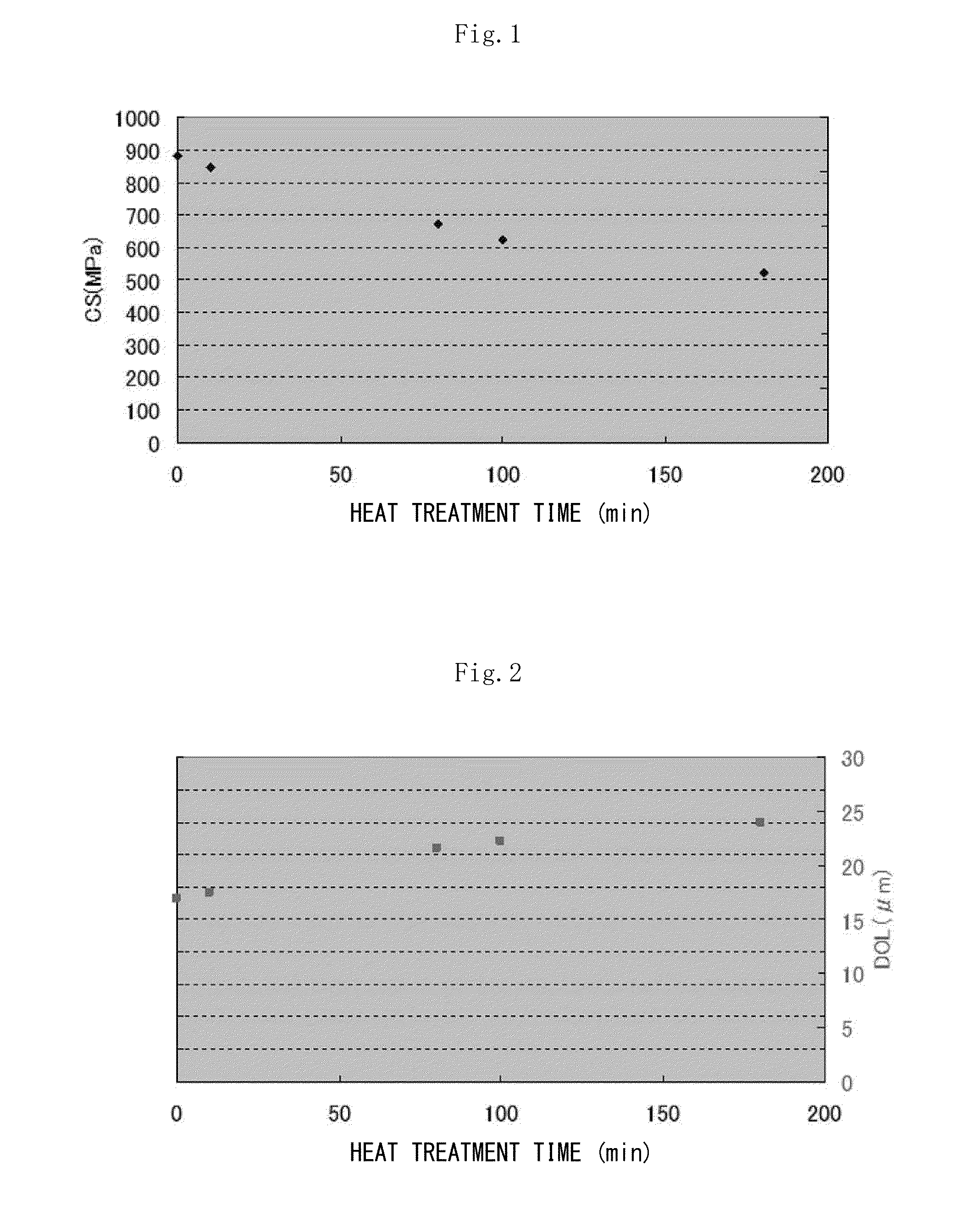Method for producing tempered glass
- Summary
- Abstract
- Description
- Claims
- Application Information
AI Technical Summary
Benefits of technology
Problems solved by technology
Method used
Image
Examples
examples
[0066]Hereinafter, Examples of the present invention are described. It should be noted that Examples shown below are merely illustrative. The present invention is by no means limited to Examples shown below.
[0067]Table 1 shows Examples (Sample Nos. 2 to 5) and Comparative Example (Sample No. 1) of the present invention.
TABLE 1ComparativeExampleExampleNo. 1No. 2No. 3No. 4No. 5Heat treatment—380380380380temperature (° C.)Heat treatment—1080100180timeCS (MPa)860846670624520DOL (μm)1717.521.622.324
[0068]First, a glass to be tempered of a sheet shape having dimensions of 40 mm×80 mm×0.7 mm in thickness was prepared. This glass to be tempered comprised as a glass composition, in terms of mass %, 57.4% of SiO2, 13% of Al2O3, 2% of B2O3, 2% of MgO, 2% of CaO, 0.1% of Li2O, 14.5% of Na2O, 5% of K2O, and 4% of ZrO2.
[0069]This glass to be tempered was formed by an overflow down-draw method and had an unpolished surface.
[0070]The glass to be tempered was subjected to ion exchange treatment by b...
PUM
| Property | Measurement | Unit |
|---|---|---|
| Temperature | aaaaa | aaaaa |
| Temperature | aaaaa | aaaaa |
| Length | aaaaa | aaaaa |
Abstract
Description
Claims
Application Information
 Login to View More
Login to View More - Generate Ideas
- Intellectual Property
- Life Sciences
- Materials
- Tech Scout
- Unparalleled Data Quality
- Higher Quality Content
- 60% Fewer Hallucinations
Browse by: Latest US Patents, China's latest patents, Technical Efficacy Thesaurus, Application Domain, Technology Topic, Popular Technical Reports.
© 2025 PatSnap. All rights reserved.Legal|Privacy policy|Modern Slavery Act Transparency Statement|Sitemap|About US| Contact US: help@patsnap.com

